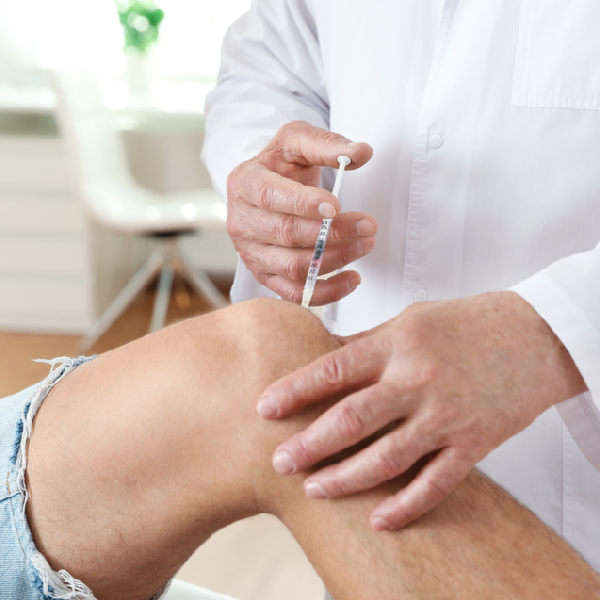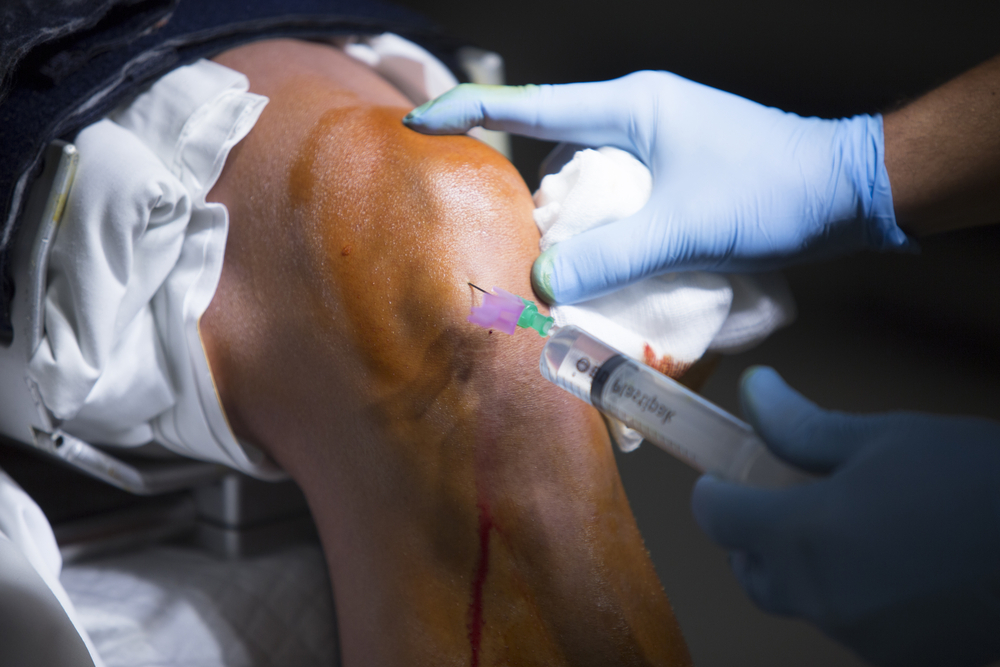Joint Injections
Did You Know?


Different Types of Joint Injections
Corticosteroid Injections:
Hyaluronic Acid Injections:
Platelet-Rich Plasma Injections:
Frequently Asked Questions:
Am I a candidate for joint injections?
What can I expect when getting a joint injection?
When you arrive for your appointment, you will be asked to remove any clothing or jewelry that may be in the way of the injection site. You will then be asked to lie down on a table or bed. The injection site will be cleaned with an antiseptic solution. A local anesthesia may be used to numb the area and an ultrasound or fluoroscopy machine may be used to provide visualization of the joint. Once the area is numb, your doctor will insert a needle into the joint and inject the medication. In some cases, fluid build-up may also be removed before injecting the medication. You may feel a brief sting when the needle is inserted. After the injection, you will be asked to remain still for a few minutes so that the medication can be absorbed.
What can I expect after a joint injection?
Some of the Joint Injections Offered at Relevium includes:
Shoulder Joint Injections
This outpatient injection procedure relieves pain in the shoulder and arm caused by arthritis, injury or disorder.
Steroid Injection for Shoulder Bursitis
This injection treats shoulder bursitis. That’s an inflammation of a fluid-filled sac called a “bursa” in your shoulder. You have these sacs throughout your body. They are a cushion between bones and soft tissues. An inflamed bursa is painful.
Subacromial Joint Injection
Subacromial injections are useful for a range of conditions including adhesive capsulitis, sub-deltoid bursitis, impingement syndrome, and rotator cuff tendinosis.
Knee Joint Injection
This non-operative, outpatient procedure is designed to provide relief for patients with arthritis of the knee. The technique allows the physician to inject an inflammation-reducing steroid with maximum accuracy.
Hip Joint Injection
If you have pain in your hip, your doctor may inject medicine into your hip joint. It can help your doctor find where your pain is coming from. It can also make your hip feel better.
Facet Joint Injections
The facet joints, found on both sides of the back of the spine, can become painfully irritated or inflamed. A facet joint injection may help diagnose the source of a patient’s pain. It can also relieve pain and inflammation.
Sacroiliac Joint Steroid Injection
This injection procedure is performed to relieve pain caused by arthritis in the sacroiliac joint where the spine and hip bone meet. The steroid medication can reduce swelling and inflammation in the joint.
Looking for Pain Relief?
Contact us today at 973-200-4695 to schedule an appointment.

